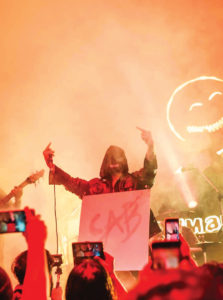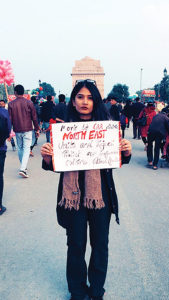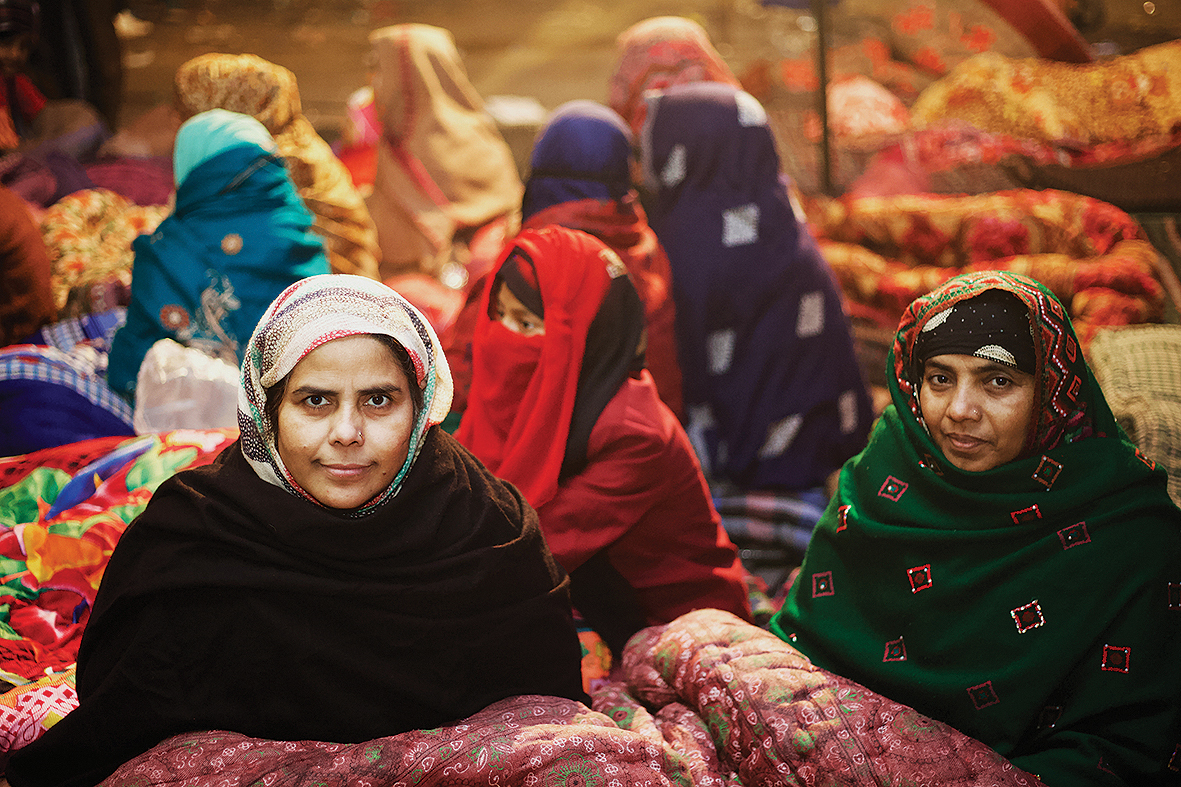A pan-India leaderless youth movement against CaA has the support of those who have been victims of identity-based discrimination. They challenge the authority as a unified force
The student outrage and protests against the Citizenship Amendment Act (CAA) and National Population Register (NPR) across the country is an organic, leaderless movement. It is a throwback to what happened in 1968 across the world, where students revolted against the authority for liberal ethos, were against capitalism in capitalist countries and were against communism in communist countries. The common narrative was based on a deep understanding of issues, local and global, television was the unifying force.
The student uprising in India is of a similar nature. The students don’t belong to any one faith, and are now being joined by youth at large who have been victims and are struggling against identity-based discrimination, be it on the basis of gender, sexuality or race. Even the young foreigners residing in India have joined the protests. One German student in Delhi was carrying a placard that said: ‘Future generations of India will regret this move’.
Many Nigerian students participated in the protests. They don’t want to be identified by name fearing immediate retribution. A 24-year-old Nigerian student who converted from Islam to Christianity three years ago, resides in Greater Noida with three others of his countrymen. He was present at the Shaheen Bagh protests, saying, “I experienced racism everyday here because of the colour of my skin. I can understand how it feels like when you’re targeted for your faith, ethnicity.”

Naveen Nagarjuna, in his mid-twenties, is a lawyer with the zeal of an activist. Instead of protesting out on the streets, he is more of a facilitator. He’s part of an informal lawyers’ collective that warns the protesters of rumours by verifying facts on the ground, also helps in the dissemination of factual information by messaging applications not based on the internet. They advise the protesters to refrain from violence and never to destroy any public property, insisting that the whole affair be peaceful. Nagarjuna helps organise legal aid for arrested students. The group is in touch with like-minded lawyers across the country who come to the rescue of protesters on a pro bono basis.
“The authorities shutdown Internet because communications is key to mass organisation. And then all sorts of rumours are spread,” he says. This group of lawyers insists on ‘lawful’ protests, it is a fact that Section 144 is selectively applied. While the pro-CAA protesters go about their business unchecked by police, student demonstrators against the law are dealt with severely. Nagarjuna also points out the difference. In the case of the former it’s “crowd management” while in the case of the latter it’s “crowd dispersal” . Nagarjuna explains, “The executive action, in the way law is implemented, and now by way of a legislation, Muslims are targeted. This legislation is the trigger point though the process started many years ago. CAA, NPR, National Register of Citizens (NRC) are all means to an end.”
Barsha Rani Das is a 21-year-old student in Ambedkar University and hails from Guwahati. “Everyone on the street is a leader,” she says. She explains that students are divided, no one forces anyone to come out on the street: Some don’t, many do. Her classmates from the ‘mainland’ describe people from the North East as ‘xenophobic’. “People here don’t understand North East. It’s their ignorance,” she says.

The North Eastern states were never under foreign rule till the British arrived. She is of the view that immigrants are a threat to indigenous tribal culture. North Eastern states are dealing with the immigration problem for years because of the porous border. Whenever there is a heavy influx of immigrants, many locals are forced to leave their homes for livelihood as resources are scarce. Some of the Muslims are taking tribal names to merge with the locals. “We are against immigration as it’s a threat to our indigenous culture, but not on the basis of religion.” she clarifies.
Vidisha is one of the key participants of this leaderless movement that’s spread across the country. They are a 30-year-old artist and organiser, who have been working towards “queering hegemonies” through their work. They are glad this movement is happening, was “long coming”. They are fighting for themselves along with other minorities, and those who feel the pressure of simply being outnumbered.
Ten years ago, they engaged with the queer rights movement and have also been observant how “queer movements tend to get dominated by gay men, and their accumulated capital, eventually queer groups emerge which are intersectional.” They also observed that within gay and feminist communities, there’s a phobia and inherent bias against the transgender community. “People within the queer community are experiencing discrimination,” they don’t mince their words. Along with anti-caste work, their organisation has also focused on issues pertaining to the trans community, and the building of the intersectional queer community in consonance with a global movement on these lines, they explain.
A few weeks ago, their group Dragery, a queer gathering of people in Delhi, wore black clothes to the Delhi Queer Pride Parade. This group expressed solidarity with the Kashmiri people, and denounced the clampdown after the abrogation of Article 370, also opposed the Trans Bill. There has been criticism by others participating that the pride parade is a “happy place” and not a site for “politics”, which they think is a lack of understanding of the meaning of pride and queerness as the parade is also a site for asserting invisiblised and marginalised identity, and fighting for rights.
They are against CAA and NRC and have also participated in the protests in Shaheen Bagh. Here hundreds of women and children, for all practical purposes, live on the main street, sleep out in the open in this biting cold. They in this way form a human shield against a possible police attack. “In marginalised communities, women know the role they need to play in the time of crisis. They put their bodies in front of the men, to protect everyone. These women probably also know what goons will do but they still continue to put their bodies in front of everyone else.” Vidisha mentions.
They’re a political person, but these protests are not on party lines. Vidisha has been equally critical of the Congress party in the past and warns against the youth political parties who would infiltrate and appropriate this organic people’s movement to meet their political ends. “It’s important that the movement is not appropriated, but it’s also important for us to not be preachy,” they say.
Shashank Bhatnagar, 35, is a metal singer, is the first musician who performed in public against the CAA in South Extension. “You can’t go against the people or the people will go against you” was his poetic message to the government of the day. He gets worked up talking about CAA, “It’s illegal and unconstitutional. period,” and if the government thrusts it on people “will lead to a civil war. Students will fight back,” he adds. A young artist Ryan Omega made a poster with his blood to register his protest.





